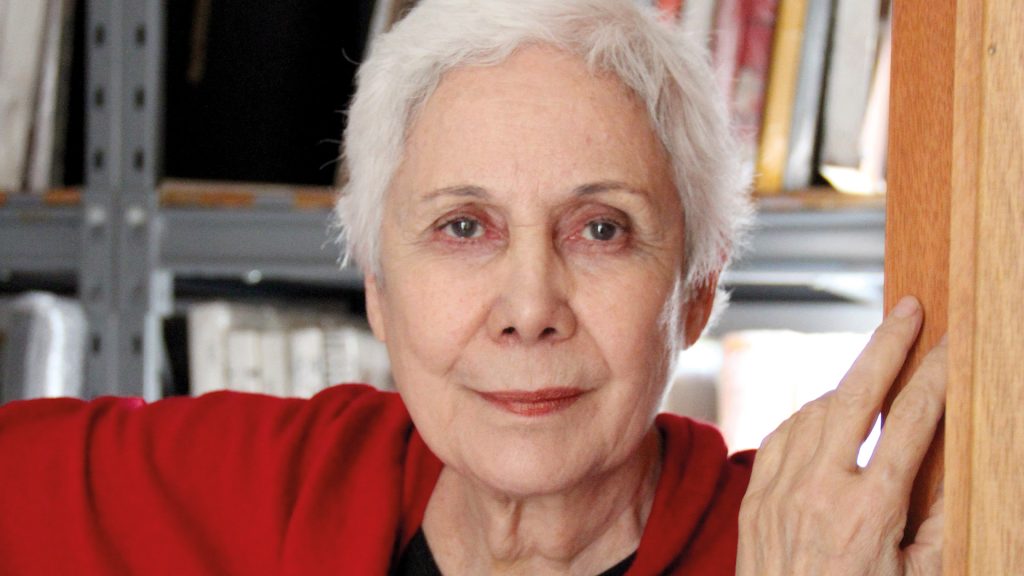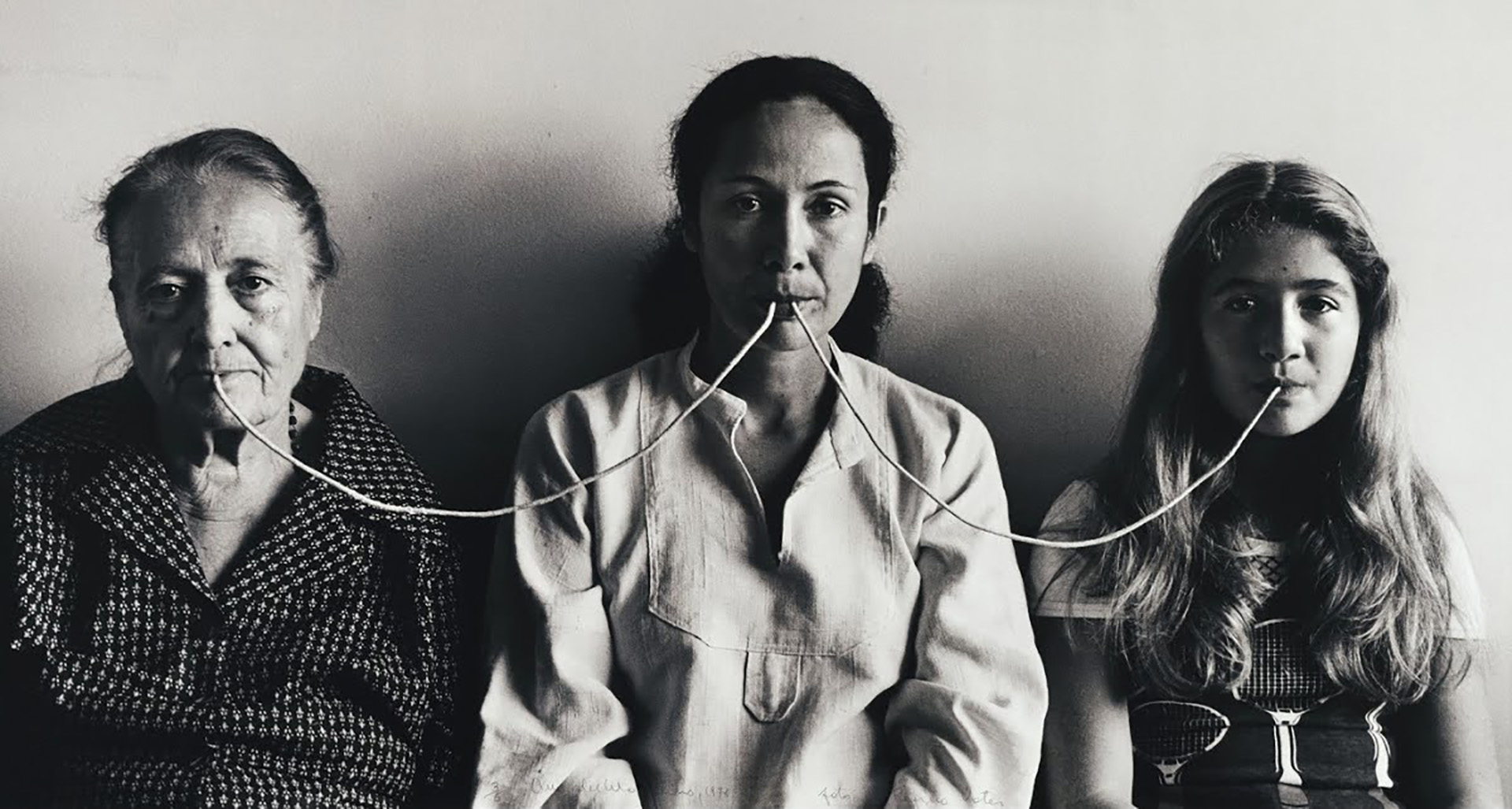
An Italian-Brazilian artist and a symbol of contemporary Latin American and more specifically Brazilian art. Her use of the mouth, tongue and language as a medium is a recurring motif in her work. Her practice rose out of the Brazilian political atmosphere of the time and is full of powerful revolutionary impetus.
Anna Maria Maiolino, who moved to Brazil at the age of 18, is a symbol of contemporary Latin American and more specifically Brazilian art. The use of the mouth, tongue and language as a medium is a recurring motif in her work. Her practice rose out of the Brazilian political atmosphere of the time and is full of powerful revolutionary impetus. In the series Fotopoemação (Photopoemaction), 1974, the artist portrays herself pretending to mutilate her tongue, nose and eyes with scissors. In Maiolino’s words, “In a moment of repression and torture, all bodies become one body in pain.” With her tortured body, the artist is representing all the bodies that were censored and persecuted by the repressive Brazilian dictatorship. In the Super 8 film Y from 1974, intense emotions are again expressed through the artist’s face and gestures. The film begins with a black screen and disturbing sounds, followed by a close-up of a blindfolded Maiolino, her mouth wide open in a cry of pain. The image alternates with a black screen while her screams increase in intensity, accompanied by moans and tears, until her face takes up the entire screen. The artist whispers short phrases in Portuguese, including “Come with me,” “Courage! Courage!,” “When the simplest honesty was called courage” and finally “Never say never,” expressing pain and anguish but at the same time also a yearning for resistance and hope for the future. In In-Out (Antropofagia), 1973-‘74, close-ups of two mouths fill the screen. At first black tape covers one mouth, preventing it from speaking. Once the tape is removed, two mouths alternate – one with red lipstick, one with black lipstick; one male, one female – attempting to communicate.

The mouths move but there is no speech, only shouts, laughter and noises. In subsequent shots we see threatening teeth, a mouth swallowing a black thread and then overflowing with red, beige and black threads, a mouth holding an egg. The mouths are active but disembodied and incapable of expressing clear linguistic meaning. The mouth is also central, though with a different function, in Maiolino’s 1976 photographic work Por um fio (By a Thread), where the artist portrays herself sitting between her mother and her daughter, their mouths connected with a thread that creates a sense of continuity and connection. Arranged in order of age, the three women stare at the viewer with their mouths closed. This work reflects Maiolino’s family role and her matriarchal lineage. In the Brazilian context of the arts of the 1960s and 1970s, work considered personal was rejected as simplistic and demagogic. Maiolino thus challenged first the political regime and then the artistic regime by showing herself as mother, daughter and woman opposed to any type of censorship. The thread that unites them represents a transatlantic bond between an Ecuadorian mother, an Italian daughter and a Brazilian granddaughter. Given all these profound themes and motifs, it is no surprise that Adriano Pedrosa, curator of the 60th International Art Exhibition, decided to give Anna Maria Maiolino the Golden Lion for Lifetime Achievement award. The exhibition Stranieri Ovunque / Foreigners Everywhere, focusing on artists who have traveled and migrated between different countries, was intended to recognise Maiolino’s pioneering work, which fully embodies the spirit of this Biennial.
Interview with Anna Maria Maiolino, Golden Lion for Lifetime Achievement